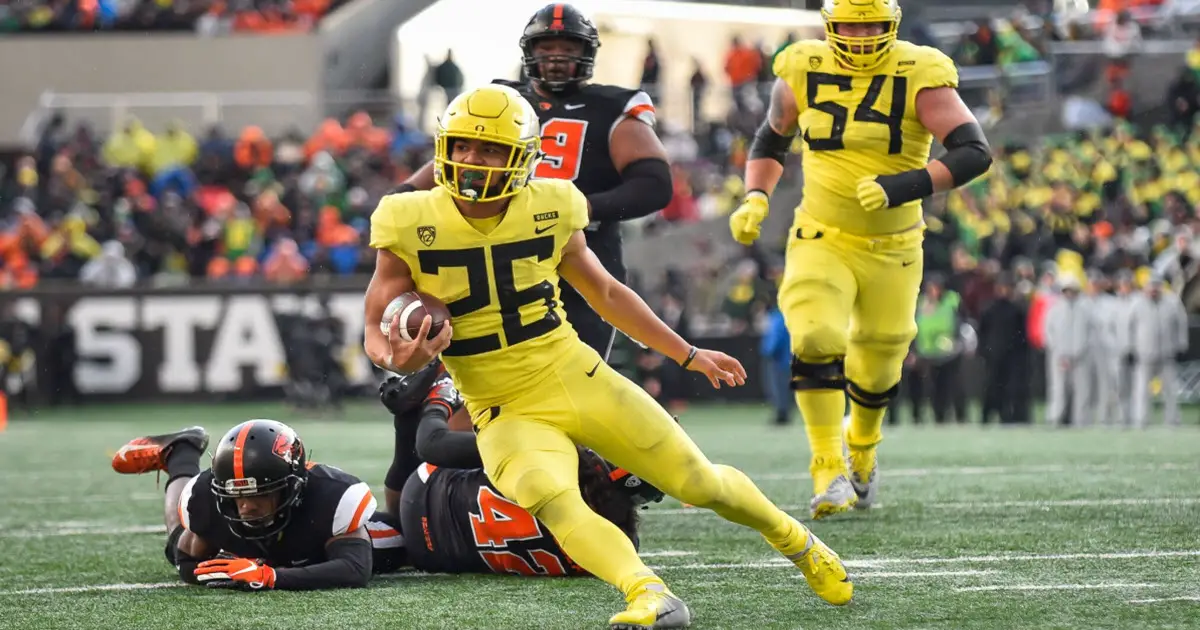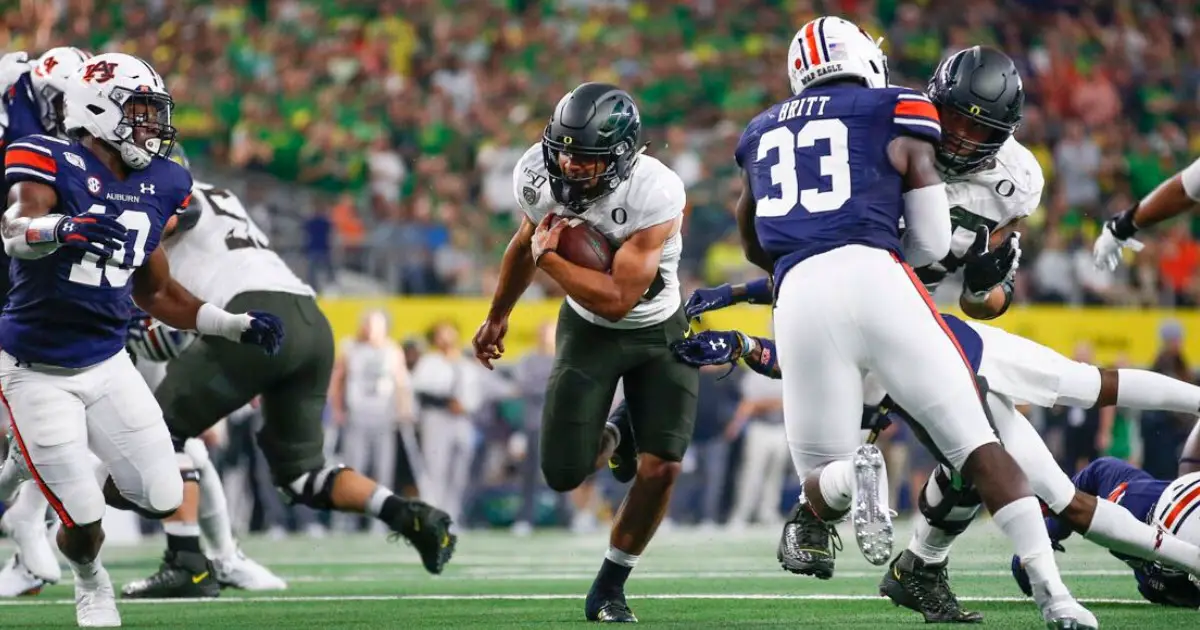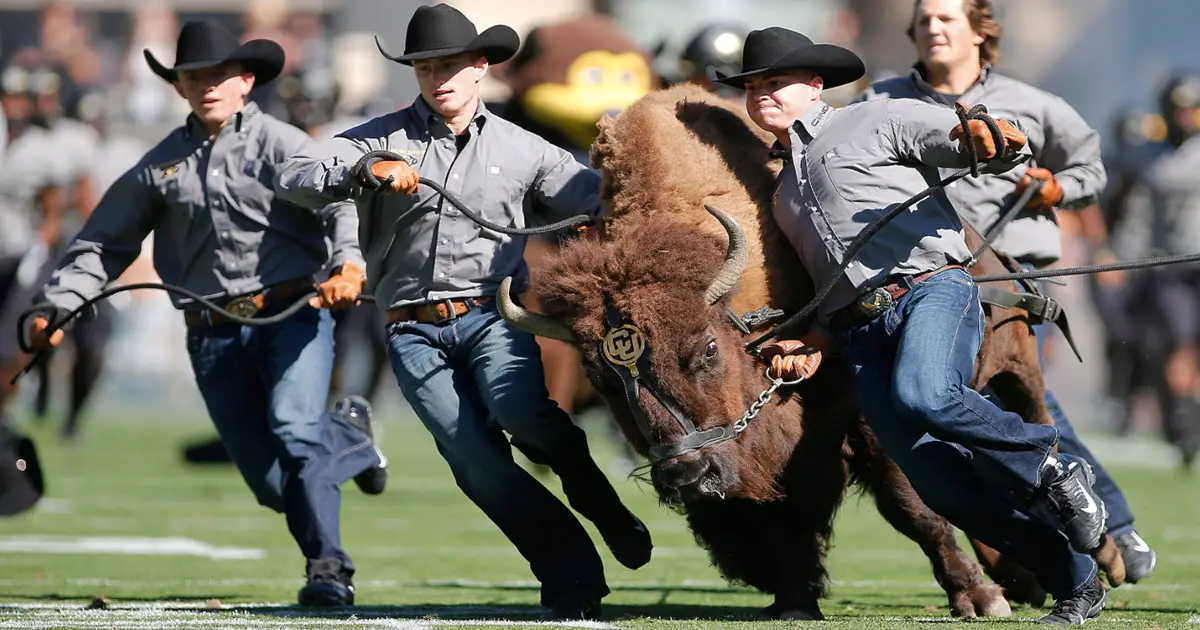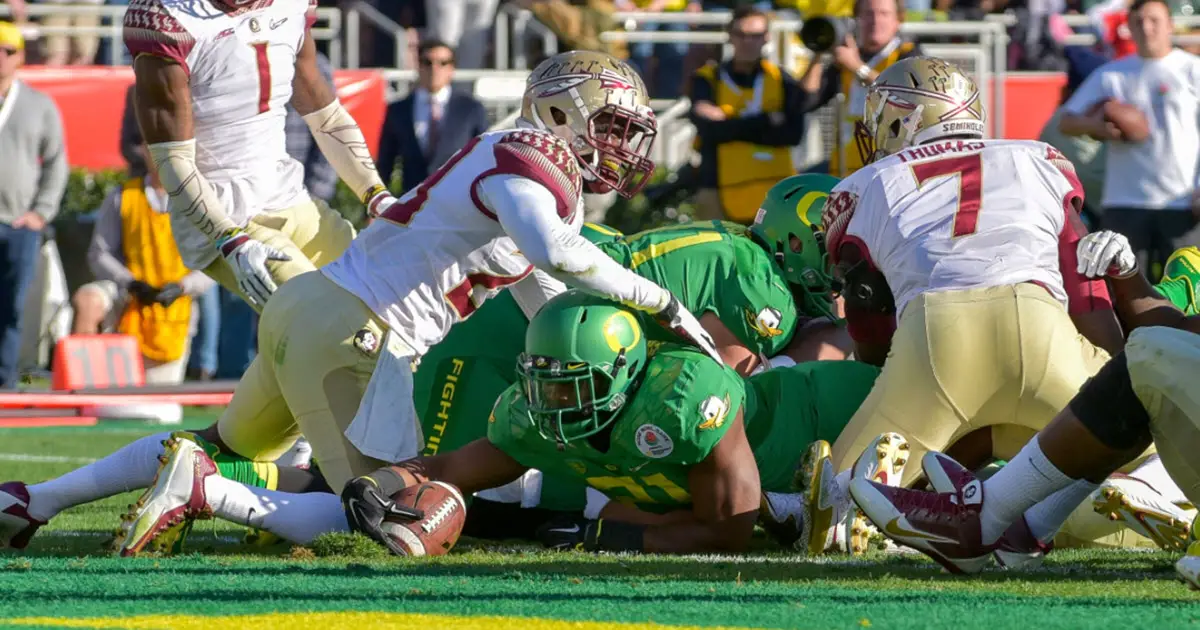How do you fit five pegs into four holes? The obvious answer is, “You don’t.” You leave one out. AZcentral.com and SEC born-and-raised Andy Staples have another solution. You whittle one of the pegs down to nothing, pick up a few of the scraps and glom them onto one of the four remaining. Naturally, the one that gets carved up—according to them—is the Pac-12, and the prime whittlings go to the Big 12.
The whittlings that get glued to the Big 12—again, according to them (drum roll, please)— are: USC, UCLA, Oregon, Washington, and of course Arizona and Arizona State. Too bad for Stanford, which has won as many Pac-12 football championship games as anybody. Too bad for the entire Bay Area. Too bad for Oregon State, Washington State, Utah and Colorado.
But Arizona gets a pass? Arizona—the only school in the conference that has never played in a Rose Bowl or claimed at least a share of a national football championship?! Not even half a championship by cheating? (woof-woof) Ah, but Arizona is a basketball school, and basketball’s important, too? Yes, Arizona is a basketball school—a basketball school that has gone 2-8 against the Ducks in their past ten meetings.

Payton Pritchard was a ‘Cat Killer.
I suppose that’s the sort of solution you can expect if you let an SEC journalist and an Arizona website do your thinking for you. Never mind that the proposal cuts out the Bay Area—a recruiting hotbed with 7.76 million people, some of whom probably watch television. Never mind that it heavily favors the Pac-12 South, which is 1-8 against the Pac-12 North in Pac-12 Football Championship Games.
Do these guys seriously believe that the “powers” in the Pac-12 (including Arizona, of course) should ditch Stanford, Cal, Oregon State and Wazoo for TCU, Texas Tech, Kansas and West Virginia? I’d rather see Arizona and ASU go back to what’s now called the Mountain West than join them in leaving our Bay Area buddies and Northwest little brothers behind!
And are you really ready to chance the consequences of telling Phil Knight that his second alma mater, Stanford, is being sacrificed for Kansas?! Which, by the way, is an Adidas school, in a state that anybody who’s ever seen The Wizard of Oz knows doesn’t even have color. Good luck with that phone call.
Which is not to say that some realignment is not in order. After all, the issue of five pegs for four holes remains.
A deeper question is, “How many teams can legitimately compete for a national title?” This number is not particularly large. And with the loss of revenue due to the current pandemic, it’s likely to go down.

Central Florida would take a Group of Five Championship over none.
I’ve thought for some time that the Group of Five should just have their own national football championship. Not a one of the group has ever made the final four, and it’s not likely to happen any time soon, if ever. And being champion of a 60+ team division would carry an adequate measure of prestige.
But the ability to finance an elite football program varies greatly—even among the Power Five schools. So now, I ask myself, does even breaking the Power Five off from the Group of Five go far enough?
If the best of the best are truly committed to not sharing revenues with the cannon fodder beneath them, the obvious solution is to establish conferences based upon an NFL-type model: only the thirty or forty best are in. Everybody else can go pound sand, which is easy enough to find in Arizona. Or, like Division I-AA, they can set up their own national championships.
Under this structure, the best of the Pac-12 could compete against the best of the Big 12, B1G, SEC and ACC without having to share revenues with the likes of the poor Beavs, Cougs, Kansas, West Virginia, Vanderbilt, and, yes, even Arizona.

Revenue from games such as against Michigan are epic.
Uniform scheduling! Playoffs! Wild cards! We could have it all!
But is that what we want? And politically—football politics, that is—could Oregon leave Oregon State behind? The same question could be asked for any of the other traditional rivalries in the league.
The arrangement would certainly mean more money for Oregon. But there would be no rivalry with the Beavs. Or the Cougs. Would UCLA and Stanford make it in? Even USC would have to do better. Tradition would be out the door, and Western U.S. culture would be the worse for it.
But again, money. If it’s all about money, then I would challenge anyone to come up with a better solution for the “haves.”
But if we’re determined to save enough tradition to share some of the wealth with the major conferences’ under-achievers, then, at a minimum, the winner of every major conference should have a shot at the championship.

Travis Dye and Calvin Throckmorton make us ponder whether we want to miss the annual thrashing of “little brother?”
If major league baseball followed the same model as I-A college football, the World Series could well come down to being the Red Sox vs. the Yankees, because some group of people think they’re the best—never mind that they’re in the same division and that one of them didn’t even win it. This would make a mockery of the regular season, something I-A college football doesn’t seem to have a problem doing.
Including all of the Division I-A conferences doesn’t get us there. We’d be looking at ten potential slots, which remains unwieldy. And why include a champion that goes 0-4 outside the protective, mediocre shell of its own conference?
And why pretend that the winner of the MAC has any chance of making it past a team with at least triple the resources?
Making it official that the Group of Five is never going to be considered would cut the problem in half. Then the choices become fairly simple: either go to at least an eight-team playoff or keep it at four and get rid of one conference.
An eight-team playoff would give the winner of each Power Five conference an automatic bid. The three remaining would no doubt be selected by beauty contest.

Imagine going to West Virginia when Dallas, Texas is a NEUTRAL site?
But if it remains a four-team playoff, it makes absolutely no sense to hand pick the Pac-12 for members to join a conference with West Virginia. Sorry. Not buying it.
No, it would make more sense to chop up one of the conferences in the middle of the country and send its members packing in different directions to bring the other conferences up to sixteen or so members each. The B1G is somewhat in the middle of the country, but it’s the oldest conference and certainly one of the best put together, so it’s not exactly the best candidate for slice and dice.
The Big 12, on the other hand, is the youngest of the Power 5, and it is centrally located. It also has a wide range of commitment to excellence (or lack thereof) in football. (I’m thinking Oklahoma vs. Kansas here.) That could be used to balance the scales among the conferences; i.e., the top of the conference would throw in with the Pac-12, and Kansas and West Virginia could serve as ongoing victims for the SEC, perhaps even to the extent that existing SEC members could quit scheduling The Citadel and McNeese State.
The Pac-12 would certainly be spread out geographically, but the impact could be lessened by creating two divisions: the Surf Division (four from California and two each from Oregon and Washington) and the Turf Division, comprised of the four Pac-8 late-comers (Arizona, Arizona State, Utah and Colorado) and four of the best from the numerically-challenged Big 12.

Colorado and “Ralphie” would certainly belong in the TURF Division.
This would effectively reinstate the Pac-8. Granted, the name “Pacific” for the new alignment including the Turf Division would be even more nonsensical than it is now, where we imply that Utah has coastline, and that Colorado—most of whose rain flows to the Atlantic—is somehow part of the Pacific-whatever. So of course, a different name would be in order.
But this arrangement would provide a clear path to the national championship for every team in every conference: win your division, win your conference championship game, and you’re in the final four.
But what about that dynamite SEC team that came in second? Too bad. This scenario is about crowning the champion of champions, all determined on the field of play. Better luck next year. That’s something Pac-12 teams are used to hearing, even when they bother to win the conference.
If what you want is a beauty contest, catch the Westminster Kennel Club on Animal Planet and bet on the poodle.
Mike Merrell
Sandpoint, Idaho
Top Photo by Craig Strobeck

Phil Anderson, the FishDuck.com Volunteer editor for this article, is a trial lawyer in Bend Oregon.
Mike (Editor-in-Chief) is a 1970 graduate of the University of Oregon where he attended the Honors College and received all-conference honors as a swimmer. After college, Mike ran for the Oregon Track Club and narrowly missed qualifying for the US Olympic Trials in the marathon. He continues his involvement in sports with near-daily swimming or running workouts, occasional masters swim competition (where he has received two Top-10 World rankings), providing volunteer coaching to local triathletes and helping out with FishDuck.com.
Mike lives on 28 acres in the forest near Sandpoint, Idaho, where he has served as a certified public accountant for most of his working career. His current night job is writing novels about Abby Westminster, the only known illegitimate daughter of Britain’s finest secret agent who has to bring down arch-villains plotting dastardly deeds. And, yes, Abby is also a DUCK!

